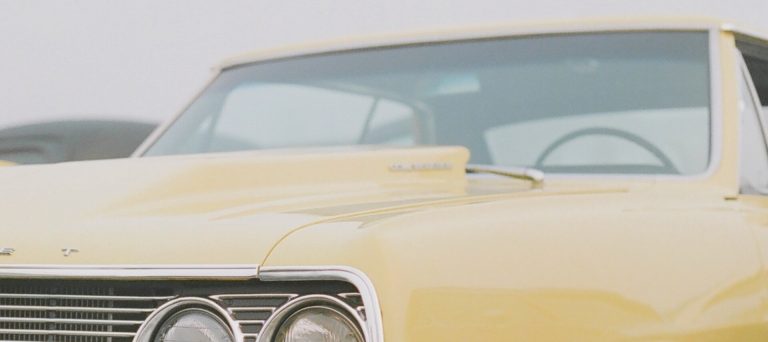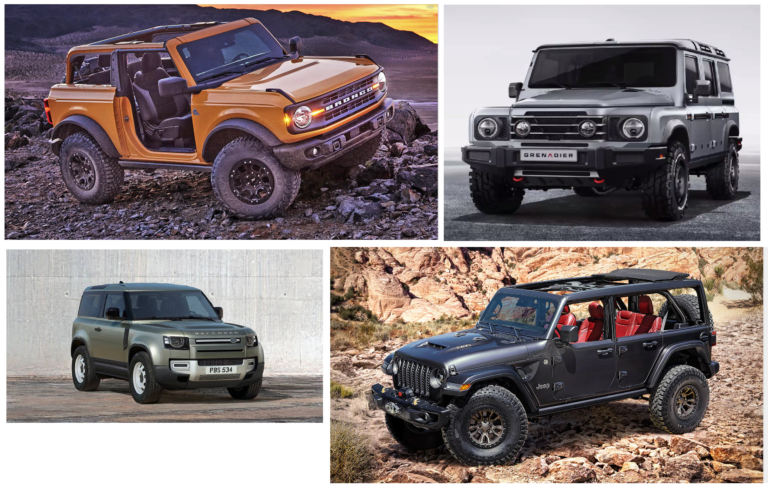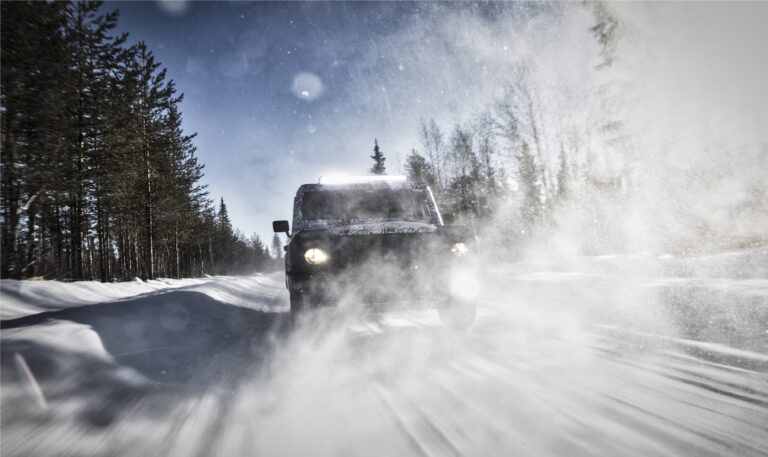JM,
I am an ardent reader of your informative column, thank you for the good work. In terms of fuel consumption, which mode of transmission is better — manual or automatic?
What are the other similarities/differences between the two? Steve
The short answer here is a manual transmission is better. Or is it? You see, I think things are not as black and white as they may seem.
Once upon a time, automatic transmissions were slapped with massive, heavy torque convertors with no lockup control, while the slush-box itself bore only two or three ratios. Yes, things were that crude. Having only two or three gears means the ratios are very widely spaced and the engine has to reach stratospheric rev levels before shifting upwards to prevent a substantial loss in momentum.
The (relatively) poorly developed clutches also caused quite some energy wastage through losses in slip and energy expenditure in rotating it. The comparative manual transmissions at least allowed the drivers to choose the ratios themselves, so they could short-shift and thus maintain low engine speeds thereby saving fuel.
Things are different now.
To start with, the skill and deftness of hand needed to row a four-on-the-floor H-pattern manual transmission is becoming the stuff of legend.
I am afraid I may be among the last of a dying breed; the breed of drivers whose abilities extend beyond stabbing the clutch with a toe and wiggling a shifter with a forearm.
Back in the day, everybody knew how to drive a manual, and drive it properly. Now, people with real driving licenses find excuses to occupy the passenger seat when presented with a vehicle sporting three pedals.
The few who man up and step up to the breach then proceed to show a glaring ineptitude at judging the power and torque curves of an engine through erratic shift programmes’ and failure to maintain a smooth flow of motion. Fuel consumption, alongside the clutch mechanism, then suffers.
It’s not all about the driver, though.
The technology itself has also brought the use of electronically controlled friction clutches for use in automatics, or the use of lockup control in torque converters. It has also brought about the manual override, which goes by a variety of names depending on the marque.
The commonest label is “Tiptronic”. Last, but not least, automatic transmissions now come with numerous ratios.
The madness was kicked off by Mercedes when they introduced a 7-speed automatic (with not one, but TWO reverse gears; whatever the hell for, I don’t know); then this was picked up by Lexus and Rolls Royce who bumped it up to eight and as of last year, a very fun trip to the fringes of the Kalahari desert introduced this columnist to a 9-speed automatic transmission in a Range Rover Evoque.
The advantage of these numerous gears is that the vehicle can be driven in a variety of customisable ways: economy, power, smoothness…. you pick a characteristic and the transmission will run with it. The Evoque can trundle around at 1500rpm in ninth gear and not hold up any other traffic.
It can also trundle around at 1500rpm in second gear and be slow enough for the driver to shout out a comprehensive list of insults at passers-by, for whatever reason.
This essentially means the Evoque can be driven everywhere at 1500rpm, leading to outstanding fuel economy. The bigger Range Rover Vogue also got an 8-speed tranny that massively improved reduced its infamous fuel consumption.
There are other instances where automatic transmissions trounce manual. I referenced them earlier in the formative days of this column, but I’ll quickly repeat them here.
Automatics are better for off-roading (they just are) and may be the more appropriate transmission for heavy commercial vehicles (they just are). Given the way some PSVs are driven, I’d say they’d make a case for themselves too in public transport.
The Paji once told me that the Mitsubishi Lancer Evolution X with the twin-clutch SST transmission is an impressive machine. I don’t really believe him; nor do I understand why he would choose to extol the virtues of an automatic 2.0 liter saloon car.
However, now that automatic transmissions have taken over in range-topping hyper cars (you cannot buy a brand new Lamborghini, Ferrari or McLaren road car with a manual transmission, they don’t exist anymore) and time trial specialists (Nissan GTR, Evo X SST), it may be time to wave goodbye to the pukka three-pedal, H-pattern manual gearbox.
*Fun fact: the ‘Muricans’ don’t give a damn about twin-clutch direct-shift transmissions with or without full lockup control or whatever. The current Corvette C7 can be had either as a proper automatic, or as a 7-speed conventional manual. Yes, a manual gearbox with seven forward speeds, like a truck.
Hallo Baraza,
Commercial and passenger service vehicles are required by law to affix at the rear, max speed allowable stickers and twin chevrons that are supposed to reflect when illuminated by a following motor vehicle thus enhancing visibility.
The former serves no purpose, since they are meant to remind the driver his maximum speed, why have them affixed at the rear?
If they are to serve their purpose, have them affixed at the dashboard area where the driver can glance at it and it serves as a reminder as it is meant to.
As for the Chevrons, they have become so substandard that some are just white and red strips with no reflective material.
Why not have reflective strips all along the length of especially trucks?
Moreover, modern vehicles have inbuilt reflectors in their taillights. They (reflectors) serve well in private vehicles and commercial vehicles being imported into the country do not have these chevrons. How is visibility achieved in their countries of origin?
The sticker serves no purpose, eh? How about acting as a source of information for foreign drivers unfamiliar to the finer details of our Traffic Act who may be driving behind these commercial vehicles? The sticker informs them that these vehicles are allowed a maximum of 80km/h, so make your decision: tail them and stick to 80 or overtake them if you plan to go faster. It is always better to have an excess of information than a dearth thereof.
As for the reflectors: They’d best be left intact because rescinding the decision to have them in place means EVERYBODY will take them off, including the penny-pinching businessmen with rattletrap, barely legal pickup trucks of fringe roadworthiness. Have you ever encountered an unilluminated cane tractor in the dead of night while at high speed? You will understand why reflectors are important. You will also thank God for disc brakes.
Hi Baraza,
What are the cons of a turbo charged car? I hear it is costly to repair let alone buy a new one. Can removing the turbo lead to engine problems or loss of power?
Thiga
The downside of a turbocharged car lies in costs: buying, maintaining and selling. You will lose money on all three counts. Removing the turbo will of course cause a noticeable drop in power.
Whats up JM,
I have a Toyota Corolla E80 purchased in 1985 by my mum and christened “Whitney Houston”.
Five years ago, we had the carburettor engine changed to a 16 VALVE EFI 1.5 cc engine with a 4-speed gear box. Does having a 4-speed gear box affect the car in anyway considering it has an EFI engine?
I like the way people on the highway underestimate Whitney just because its number plate doesn’t have a letter at the end. Once I start revving the engine, those cars see dust. Now that the history lesson is behind, the questions;
1) Would it have been possible to change a VVTi engine? If not, why?
2)We wanted to change the 4-speed gear box to a 5-speed automatic gear box but the mechanic told us it would not be possible? Is it possible to change a manual to an automatic gear?
3) The car starts perfectly in the morning but then in the course of the day develops a hard start. What do you think might be issue?
4) The engine makes a lot of noise, now I am not sure if it is because it is getting old or there is a problem?
5) When I take the car for engine wash it will refuse to start until I jumpstart it. Would you propose I wash the engine or just let it stay dirty?
6) Whitney has on a pair of 12’ inch wheels and I was considering of getting her 14’ inch wheels. What are the ramifications of putting such wheels on a car? Or do we have to do certain adjustments to the car?
7)The back wheels of Whitney are bent inwards and my mechanic told me that she needs to be taken for kember. What is kember?
8) Whitney is a front-wheel drive. I have taken her for numerous wheel alignments but it still gets lost on the road and especially on rough roads. I have replaced all the parts of the front wheel, tie-rods, shocks, springs, bearing and so on. What might be the problem?
9) Insurance companies in Kenya don’t give comprehensive insurance to cars like mine claiming that if the car were to be in an accident, it would be hard to source for parts. Can my car be reconditioned in Kenya? What does reconditioning mean?
10) Is it true a showroom car has a rear rectangular number plate while a second hand car has a rear square number plate?
11) Finally, I work at a boys club. The boys are crazy about cars and I was hoping maybe you would find time on a Saturday to come and talk to them. I know they would love it. Our email [email protected].
Thanks,
Alvaro
Quite a lengthy email. Also, an interesting one. Whitney Houston, you say? Very interesting.
1) In a world where people can replace a tiny melon-sized two-rotor Wankel engine with a leviathan LS2 6.0 litre small-block Chevy V8, I don’t think engine swaps are exactly a problem anymore.
In this case it should be more straightforward seeing how the engine and the car both came from the same company. So, yes, a VVT-i engine would have fitted, provided the engine mounts are compatible with Whitney’s body.
2) It is possible but the involved labour is off-putting. Also you may need to shop for a new ECU(Electronic Control Unit) or programme the current one to control the automatic gearbox but a) Toyota chips are almost impossible to hack and b) how does one start programming an automatic transmission? It will take years, if at all. The easiest way of doing such a conversion is to get an engine and gearbox combination (such composites are available).
3) I think your plugs could be on the throes of death. Poke around your electrical system: the HT leads, wiring, plugs etc.
4) This depends on what noise it is. An engine at 5,000 rpm will also be “noisy” by default, especially with the bonnet open.
5) I find the lack of lateral thinking in garages and motoring establishments humorous; more so in regard to the engine wash. Has nobody ever heard of a wet rag? Is the verb “to wipe” so alien to us?
6) Provided the 14” rims fit, there should be no problem at all…
7) It is not “kember”, it is “camber”; and the car is not “taken for camber”, it requires “camber adjustment”. Camber is the offset position of the wheel along the Y axis, — the top of the wheel is not in line with the bottom of the wheel. If the top is offset inwards or the bottom is offset outwards (leading to a knock-kneed stance), it is called negative camber, whereas the opposite (bow-legged stance) is called positive camber. Camber adjustment is part of the wheel alignment process.
8) Now check your bushes. Also, make sure the tyre pressures are equal or close to equal on both sides of the car. Lastly, see 7) above. The misalignment at the rear could have an effect on handling.
9) Reconditioning a car such as yours will depend on how much dedication YOU have.
10) Not necessarily. It just applies to majority of situations but there are several not-so-isolated cases where the converse is true.
11) I’d be happy to give you folks a talk.




